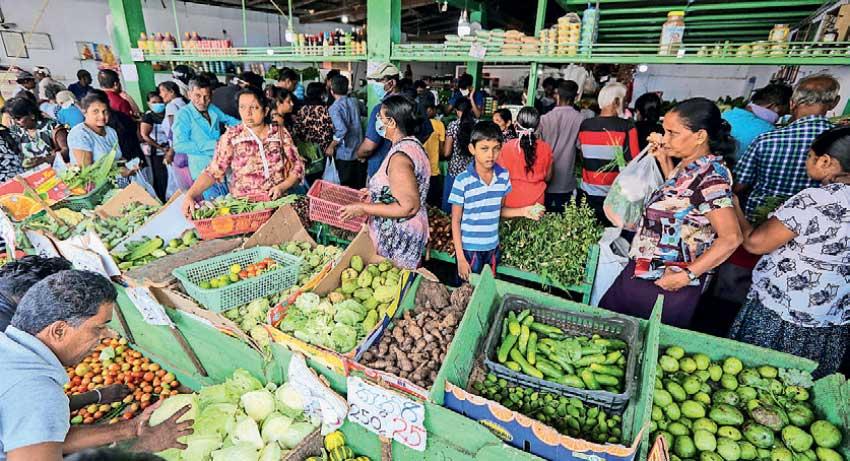19 Mar 2021 - {{hitsCtrl.values.hits}}

Sri Lanka’s food prices are on the rise albeit the overall inflation measured by the price indices show benign levels. The government for months has been trying with various tools to bring food prices under control but without any success.
According to an analysis carried out on the prices in the economy by First Capital Research (FCR), the prices of food items have been on the rice since January 2021, at high single digits, while the non-food prices remain subdued, rising less than 2.0 percent.
Sri Lanka’s overall prices, as measured by the Colombo Consumer Price Index (CCPI), rose by 3.0 percent in January from a year ago, accelerating to 3.3 percent in February.
The food prices rose by as high as 6.8 percent in January from a year ago, accelerating to 7.9 percent in February at a time when almost all factors signal a renaissance in the agricultural and other produce, a paradoxical situation facing the Sri Lankan economy.
Sri Lanka had a record Yala and Maha rice harvest while the subsidies, guaranteed prices, lower interest rates for farming and cultivation and government support for market access are at their highest levels, particularly since last year, as the pandemic necessitated to build food security at home, when the global supply chains were disrupted.
The government has been struggling to keep the prices of daily essentials such as rice, vegetables, chicken, egg and the likes for months now and the price controls and the tax cuts have done too little to nothing to tame the prices.
The Central Bank also took note of the rising trend in food prices recently, although it maintained its medium-term inflation projection at 4 to 6 percent through the year-end.
Unscrupulous middlemen, who operate as a mafia, are blamed for their attempts to manipulate the prices by creating shortages in the market.
These middleman and traders are holding the farmers, consumers and even governments hostage to make
super profits.
March and April are typically the periods of higher prices, as the demand soars with the coming festive season.
The recent weakness in the rupee against the dollar could also put pressure on imported food prices also to go up.
Import expenditure on food and beverages rose by 24.6 percent in January from a year ago to US $ 183.8 million, among which sugar and confectionary import expenditure surged 187 percent to US $ 57.5 million.
19 Nov 2024 6 hours ago
19 Nov 2024 6 hours ago
19 Nov 2024 8 hours ago
19 Nov 2024 19 Nov 2024
19 Nov 2024 19 Nov 2024